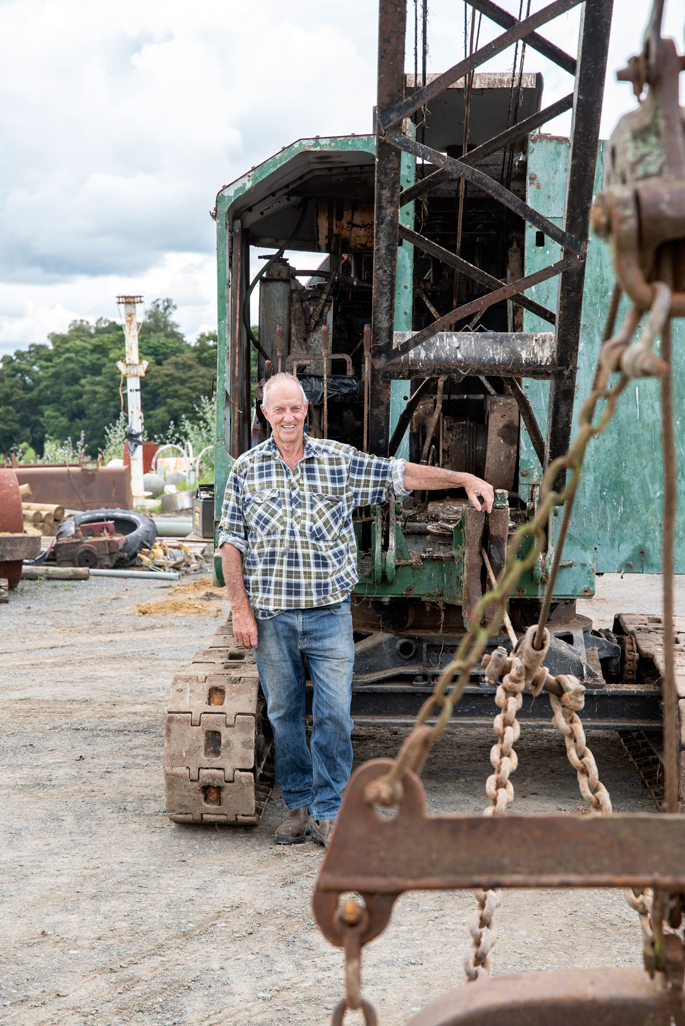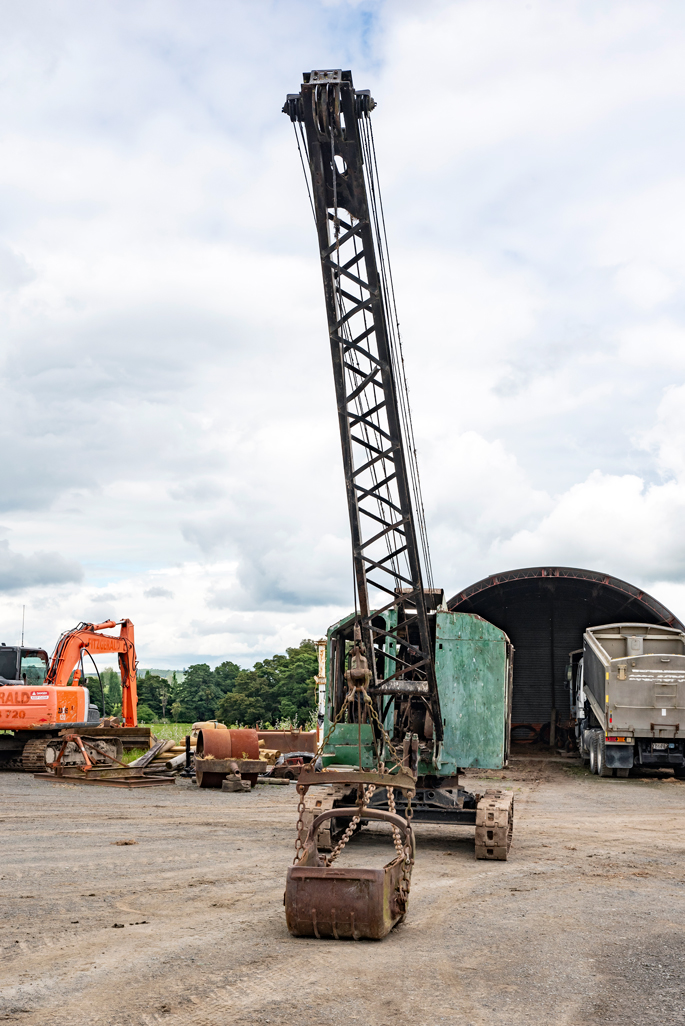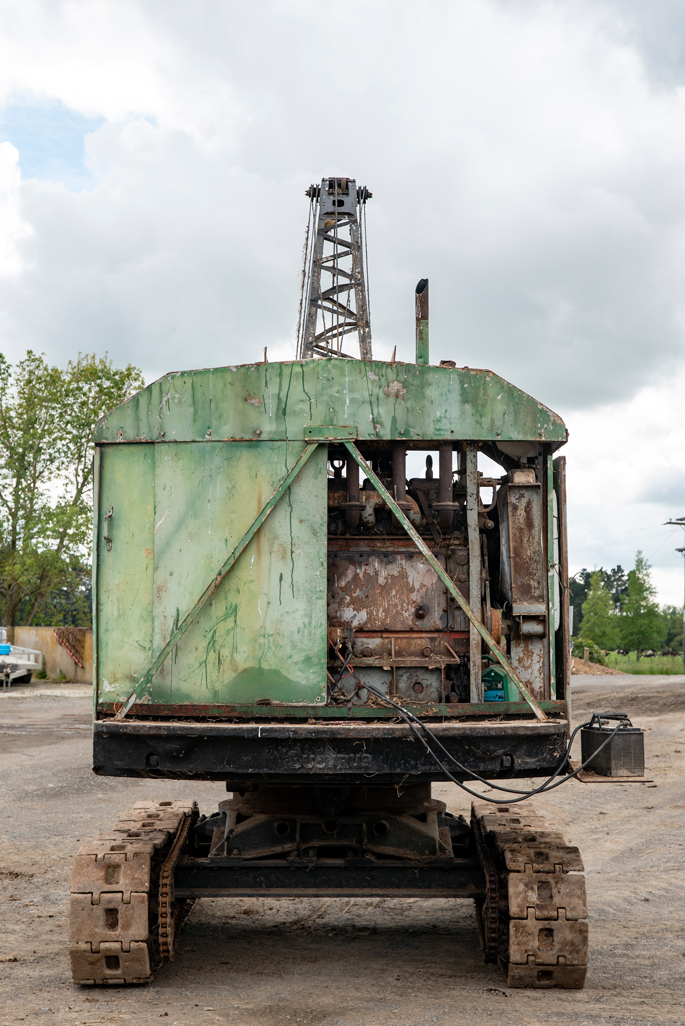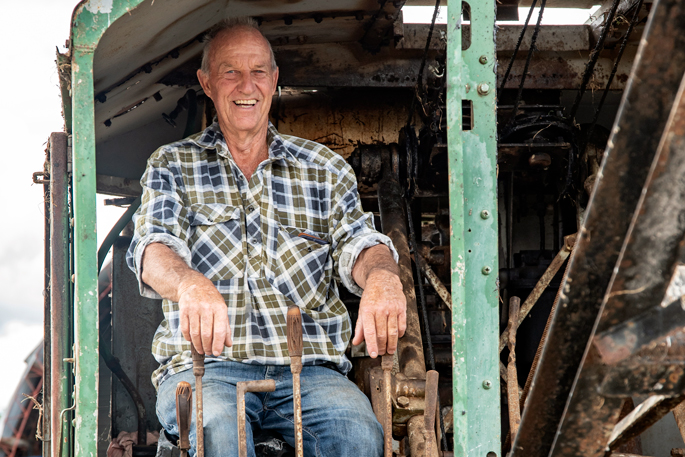Neil Fitzgerald was born into a dairying family in Ramarama. They moved to Springdale and his father started a contract drainage business, although he worked on the farm.
“I learned to drive at 15 and worked for D H Price in Te Aroha. Using draglines I dug canals, formed stopbanks and cleared drains all over the Waikato,” says Neil.
He worked on the foundations for the raised Tahuna to Paeroa road, which skirts the Kopuatai Peat Dome wetland, a 10,021 hectare peat bog.
Neil says he bought his first dragline when “dollars and cents hit the country”, so 1967.
Neil and his wife Jennifer have had a dairy farm and contracting business for the last 56 years
. Their son Grant took over the contracting, and Jennifer still oversees the dairy side.
Neil is semi-retired with time to work on his large collection of tractors, bulldozers, draglines, Land Rovers, a Model A car and Minis, and add to his substantial agricultural and earthmoving model collection.
Skill
Neil was delighted when he was given a 1940s Ruston 10-RB dragline in 2018, just like ones he used to operate. The 48hp VRH Ruston diesel engine has three cylinders, and the cab sits on tracks.
 Neil Fitzgerald and his Ruston 10 RB Dragline. Photo: Catherine Fry.
Neil Fitzgerald and his Ruston 10 RB Dragline. Photo: Catherine Fry.
“Before hydraulics came in during the late-1970s, operating a dragline required skill and experience.
“To lift the bucket safely, you had to work the clutches with your hands at the same time as using your feet for the brakes. This controlled the wire ropes running down the 28 foot boom to the bucket.
“It’s easy to tangle the ropes if you don’t know what you are doing as the cab can rotate 360 degrees.”
When breaking in boggy farmland in the Hauraki Plains, the dragline body and cab sat on wooden pads that were often semi-floating under the water surface.
 A mid-1940s Ruston 10 RB Dragline. Photo: Catherine Fry.
A mid-1940s Ruston 10 RB Dragline. Photo: Catherine Fry.
“You worked going backwards, the bucket was thrown out in front, dragged until full, and hoisted up, and the cab and boom turned 90 degrees to deposit the bucket contents to the side.
“Then you reversed onto the wooden pad behind you, hooked up the wooden pad you just left and turned the cab 180 degrees to deposit that pad behind you before throwing out the bucket to the front once more.”
Nostalgia reasons
Neil chuckles as he remembers the slow and hair-raising process and how the goal was not to unbalance the cab and tip the whole rig over into the bog.
 Rear of the cab. Photo: Catherine Fry.
Rear of the cab. Photo: Catherine Fry.
“It’s a shame because at one point draglines were being scrapped as hydraulically operated machines took over.”
However Neil has three draglines, which he admits are purely for nostalgia reasons and so there are still some of these amazing machines around.



0 Comments
Leave a Comment